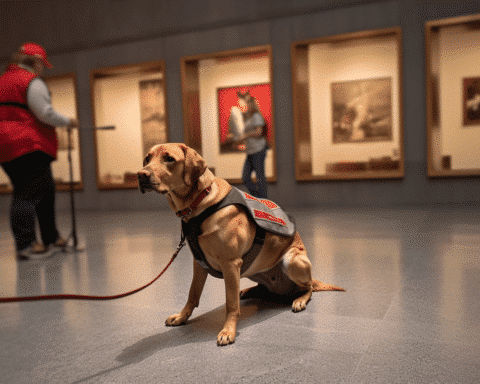Dogs have a charming habit of tilting their heads, which can be seen across a wide range of breeds and types of dogs.
This behavior can be quite endearing and often leads to dogs receiving extra attention and affection from their owners and others. However, the reason why dogs tilt their heads has been a mystery until recently.
In a study published in the peer-reviewed scientific journal Animal Cognition, researchers from Eotvos Lorand University in Hungary proposed that head-tilting in dogs may be related to evaluating and interpreting relevant and meaningful environmental stimuli.
They argue that dogs use this behavior as a way to gather more information and better understand the things around them, especially when it comes to verbal cues and spoken words.
To test this hypothesis, the researchers conducted a series of experiments involving 40 dogs, in which the owners were asked to verbally request their dogs to fetch a familiar toy.
The researchers observed the dogs’ reactions and analyzed the presence of head tilts during these object-label knowledge tests.
They found that dogs were likelier to tilt their heads when they heard words or phrases associated with familiar objects or toys, suggesting that the behavior may be related to their ability to understand and remember words.
The results of this study provide new insight into the cognitive abilities of dogs and their ability to understand and process verbal cues.
It suggests that dogs are more perceptive and attentive to their surroundings than previously thought and that head-tilting may be a way for them to actively engage with and comprehend the world around them.
The findings also suggest that when dogs tilt their heads, it may be an indication of them trying to remember the past and making connections with familiar things, or it could also be a sign of confusion when they don’t understand the words they’re hearing.
According to a recent report, only a few dogs can learn the names of objects after only a few exposures, while most dogs cannot.
These dogs that are able to quickly learn labels are referred to as “gifted word learner” (GWL) dogs.
The study’s researchers had a hypothesis that if head-tilting in dogs is related to the processing of meaningful or relevant auditory stimuli, then GWL dogs should tilt their heads more frequently upon hearing the name of a toy compared to typical dogs.
To test this hypothesis, the researchers conducted a three-month-long program where both GWL and typical dogs were taught the names of two toys.
The results showed that GWL dogs tilted their heads much more frequently than typical dogs, with a frequency of 43% vs 2% of trials.
This suggests that the differences in behavior may be signs of increased attention and/or matches in memory upon hearing the name of a visual image.
It is worth noting that there needs to be more research on the topic of head-tilting in dogs specifically. In the past, explanations for this behavior have varied from dogs tilting their heads to aid their hearing to simply being able to see past their snouts.
The researchers stress that there is a need for further research in this area, including studies that look into head tilting for a variety of dog breeds. The majority of the dogs studied in this report were Border Collies.
This study adds to our understanding of the cognitive abilities of dogs and how they process and understand verbal cues.
The fact that only some dogs can quickly learn labels and that these “gifted word learner” dogs display head-tilting behavior more frequently suggests that this behavior may be a sign of increased attention and memory matching.
It’s interesting to note that this is the first study focusing on head-tilting, specifically in dogs, and it is exciting to see new research in this field that can help us understand more about our furry friends.
Overall, the study brings us one step closer to understanding our canine companions’ fascinating and complex behavior and how they interact with and understand the world around them.
However, as the researchers point out, more research is needed to fully understand this behavior, including studies that involve a wider range of dog breeds.
So next time you see your dog tilting its head, think about how it might be trying to understand the world around them!




